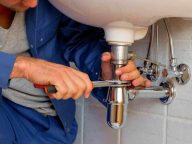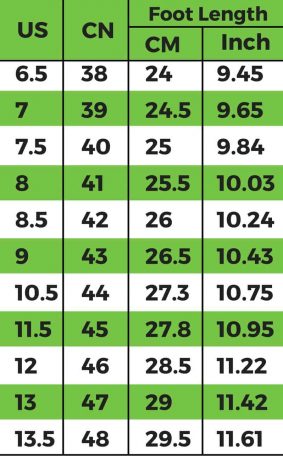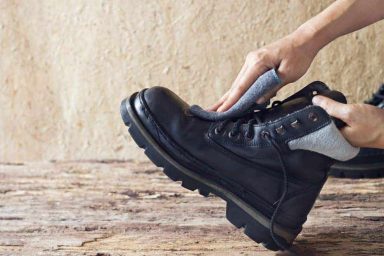PROS
A quilted collar inside and a soft insole ensure that these boots fit your feet comfortably in any situation. The rubber sole grips to most surfaces, including slick surfaces, to help you maintain your balance.
BEST MEN’S
WORK BOOTS 2025
BOTTOM LINE
With more than 3,000 reviews posted on Amazon alone and an average star rating of more than four stars, it’s not surprising that these are our top choice. The PRO has a steel toe and padded collars for safety and comfort.
PROS
Nylon plates inside these boots absorb shocks and push those shocks away from your feet. The PRO also has a lighter design with each boot weighing just over 1.5 pounds.
CONS
A few men found that the boots had a tight fit or felt stiff until they broke in their pairs. Some men also wished that the boots came in wider sizes.
BOTTOM LINE
Thanks to a rugged design and a great sole, the Raider from Wolverine will help you stay safe and comfortable at work. The real leather is resistant to damage, while the soles grip to the slickest of surfaces.
PROS
With a specially designed tread on the sole, these boots do a great job of sticking to any wet surface. The sole, as well as the upper, is resistant to scratches and other common types of damage.
CONS
The hooks used on these boots might be too weak to keep your laces tied. Some men also complained about the overall quality of the boots and said they started falling apart quickly.
BOTTOM LINE
Suitable for any type of job, this work boot from Carhartt has a rubber sole that keeps your feet dry and leather that moves in time with your body. The manufacturer added several layers of padding for extra comfort too.
PROS
The rugged flex technology designed by Carhartt ensures that the boots move as you move and that the leather stretches to give you more comfort. You’ll also like the rubber sole that absorbs shocks and blocks water.
CONS
A few reviewers complained that these boots weren’t as comfortable as they expected. We also heard that a few customers thought the boots had some quality issues.
BOTTOM LINE
Red Wing designed the Heritage Classic for men who want to put their stylish feet forward. Though the boots offer lots of protection on the job, they also have a great design for wearing around town.
PROS
These more stylish boots are suitable for wearing at work and on date nights. Made from leather, each boot has a traction sole with a slight platform and a larger opening for more convenient wear.
CONS
Some men found that the boots were better for those narrow soles than those with wider feet. A few customers also received the wrong color too.
BOTTOM LINE
With two colors to choose from and a classic design, these Dickies work boots will fit any man. The boots also have a slip-resistant sole that will keep you from falling and sliding as you walk.
PROS
A quilted collar inside and a soft insole ensure that these boots fit your feet comfortably in any situation. The rubber sole grips to most surfaces, including slick surfaces, to help you maintain your balance.
CONS
A few men wished that Dickies used metal hooks instead of flaps on this boot. Some guys also complained that the boots wore out within a year.
No matter how much time you spend on your feet every day, you need the best men’s work boots on your feet. These boots not only offer the support that you need, but they also keep you safe on the job site. Whether you work in construction or spend days working in the homes of clients, you should look at the best men’s work boots of 2025. Our list of the top boots for the year includes those from names you know such as Timberland and Dickie’s. You’ll also find that the top men’s work boots of the year are suitable for all types of guys and have approval from OSHA.
Advertising Disclosure
The information we provide you is free of charge and a result of extensive research by our product experts. We use affiliate links in our site that provide us with referral commissions.
While this fact may not influence the information we provide, it may affect the positioning of this information

When you accept a new job in certain industries, employers expect you to bring the necessary tools and supplies to the site. This can include wrenches and any other tools that you might need as well as protective gear such as boots. Many pairs feature a steel toe that can resist impacts and keep heavy objects from crushing your feet. We’ll talk about some alternatives to steel toe boots in the following section and give you more information about work boots for men, including average prices and the top features.
Follow us on:
Get exclusive content, advice and tips from Honest Product Reviews delivered to your inbox!
We looked at more than 40 different pairs of work boots to find the best models for our readers. To create this list and the shopping guide that follows, we used both Amazon and the highest ranked pages on the web. Not only did we look at guides and OSHA standards, but we also looked at brand new products that just landed in 2025 and models from past years. That helped us see what manufacturers did to improve the designs that offered and to see what the top features of each pair included.
Once we narrowed down our list to the top 20 pairs of work boots, we used Amazon and the reviews that customers there posted. We wanted to see what they thought about fit and comfort as well as how long the pairs they bought lasted and how often they wore their boots. That research helped us find 10 boots worthy of our list. We then looked at average star ratings and reviews to pick the five best options. None of the boots on our list have a rating of fewer than four stars. Many have an even higher rating. You’ll want to read our product descriptions and check out our chart before reading the rest of our shopping guide to find the best men’s work boots for you.

Sole design
Exterior/upper materials
Price
Durability
Customer reviews
The Timberland PRO gets our choice as the best work boot for men available today. With a range of sizes and colors available, this is one of the only boots that allows you to pick the right option for you based on your budget and size. Made from leather like many of the boots on our list, the PRO has a lacing system that uses both eyelets and hooks that ensure your boots always stay laced. It also has a rubber sole with a platform design that gives you more height and helps you feel secure and solid as you walk.
As one of the lightest boots on the market, the PRO weighs only 1.58 pounds. That allows you to walk as fast as you need and even break into a run without feeling pulled down. A midsole made from polyurethane adds more padding to the design to help you feel more comfortable during a long shift. You’ll also find a nylon plate inside each boot that diffuses any shocks and keeps your feet and legs from absorbing those vibrations. Also called the Pit Boss, this boot features uppers made from real leather and padded collars that add to that comfortable feel.
If you found our shopping guide when hunting for a good pair of work boots, you might think that you already know all the features of this type of boot. No matter how much experience you have in the construction industry or a related industry though, you may not know what a work boot really is. Some manufacturers will take any boot that has a leather exterior and a good tread and call it a work boot. If you decide to buy a pair that we didn’t include on our list, you must exercise caution. You may find yourself buying a pair that can’t keep up with the physical demands of your job or one that doesn’t offer the support and traction that you need.
Work boots are available for both men and women because of the growing number of women now working in physically demanding fields. Boots designed for men can come in both full and half sizes, though full sizes are more common. Most have a platform sole with a detailed tread pattern on the bottom. When you walk, this tread grips to the surface that you walk on or over. Work boots will also have intricate lacing systems that keep the laces from coming loose in the middle of the day.
First introduced in the 20th century, engineer boots are shoes designed for those who spent a lot of time on their feet. Engineer boots today often feature a leather exterior and have hooks and eyelets that let you lace the boot all the way up to your knee.

The Raider from Dickies is a great option for men who want a boot with a classic design and a comfortable fit. Available in two colors, this boot has an extended arch that gives you more support. You can choose a classic work boot in a wheat color or pick a darker black leather version that will hide any of the dirt that you pick up on a daily basis. It also features a quilted collar on the inside that acts as padding to cushion your feet.
The Raider has a synthetic sole with an outer layer of rubber. This sole has a slip-resistant design that keeps you from slipping and sliding as you work. The tread pattern on the bottom grips tightly to any type of ground or floor that you encounter to ensure that you have the grip and the balance that you need. Unlike other manufacturers that use hooks, Dickies uses metal flaps on the top of these boots. As you lace them up, you can use those flaps to keep the laces from coming untied. The Raider features insoles made from memory foam too. Those insoles both absorb shocks and cushion your feet during the longest of shifts.






When you first look at a work boot, you probably notice the upper and little else. The upper refers to the outer area of the shoe and will usually feature leather. There are many different parts found in a work boot though. We’ll go over these parts now, but you can also look at the graphic following this section to see where each part is on the boot.
Our top choice for the best composite toe boot is the model from Carhartt, which has a solid reputation in the industry. This boot features an upper made entirely from 100% leather and multiple layers of padding inside. Though it doesn’t come in as many colors or designs as other boots do, the manufacturer still gives you two different choices. Both versions use a deep and dark shade of brown leather that won’t show dirt or damage, as well as lighter colors, can. In addition to eyelets that work with the laces, Carhartt also allows you to tighten the boots even more as you thread the laces through metal snaps at the top.
The top feature about this boot that many men like is its rugged flex technology. Carhartt designed this technology specifically for men who spend a lot of time on their feet and those who constantly bend and flex. The technology allows the leather to bend and flex with each movement that you make. Though we like the leather used on the outside of the boot, we like the padding inside just as much. Not only does Carhartt give you a padded tongue, but it also added multiple layers of padding inside to help you feel comfortable.
Knowing the parts found inside a work boot is important because you want to know what each part does and how it protects or adds to your comfort. The interior parts of a boot usually include all of the following.
Many men trust the name Red Wing because the company has a long history of making boots and shoes for men that last a long time. Its Heritage Classic Moc is no exception to this rule. The Heritage Classic has all the features you need in a work boot but also has a more stylish design. You’ll feel just as confident and comfortable when wearing a pair around town as you do on the job. Made in the United States from real leather, the Heritage has a classic design with laces that you can tighten and contrasting topstitching on the leather. Each boot has a six-inch wide opening that helps you more easily slip your feet inside too.
When you first look at this boot, you might notice that the heel and back area is slightly taller than the area beneath your toes. Red Wing designed this boot to come with a platform heel that gives you more stability as you walk. It has a longer shaft that offers more support for your arches too. We like that this boot comes in different designs too. You can choose from different colors of leather, including lighter and darker shades of black and brown.

One of the most important features of a work boot today is the toe cap inside the toe box. While the toe box itself will use leather or the same material used on the outside of the boot, the cap will usually use some type of metal. A handful of manufacturers today offer caps made from composite materials too. With the right design, this cap will feel like just another part of the boot. It shouldn’t run uncomfortably against your toes or any other part of your foot. If you can feel that cap, you may want to pick a different pair of boots. You should look at the different materials and each one’s pros and cons.
Aluminum
Some companies now use aluminum instead of steel because aluminum is both lighter and less expensive. You can get a good pair of boots with an aluminum toe for less money, but you shouldn’t expect that pair to last as long as a steel toe pair would. Aluminum reduces the fatigue that you experience but can result in a minor electric shock sensation when you touch metal. Many men also find that the metal picks up the temperature from their surroundings but that the heat or cold feeling dissipates quickly.
Pros:
Cons:
Composite
Composite materials refer to the material that manufacturers mix from other materials. Most use a blend of ceramics that can be just as strong as steel when heated to a high temperature. This mixture may include a polymer blend or some adhesives that add strength to the blend. Composite toes do a good job of absorbing shocks and keeping your feet safe. This material doesn’t change temperatures the way that metals can and weigh less too.
Pros:
Cons:
Steel
Steel is the most common material used in toe caps, which is why many men actually shop for steel toe boots. The cap itself is thin but durable and will absorb the shock of anything that might fall on your feet. Even if you are quite cautious at work, you never know what someone you work with might do. If any object falls towards you, the toe cap will keep you safe. Steel is one of the heaviest materials though and will add weight to your boots. You may find that the boots feel uncomfortable after a regular shift because of that weight. Steel toe boots can retain the temperature of the surrounding area and make you feel cooler or hotter. These boots are more durable than other types too.
Pros:
Cons:

Manufacturers use different methods of constructing work boots and attaching the sole to the top of the boot. You must make sure that the company used a good method because this stops the sole from coming off the boot. This can occur because you got the boots wet or because you wore the boots more often. Wear and tear can cause the sole to rip right off the bottom of the boot. A good way to make sure that a pair can keep up with your job demands is with a look at the construction method that the manufacturer used.
Rubber Welt
Though not as common as some of the other methods listed below, a rubber welt is a process that some manufacturers use. They essentially use leather and rubber to attach the tread to the bottom. The tread itself comes from The Goodyear Tire & Rubber Company, which uses the same rubber for boots that it does for its tires. It creates the treads and sends them to individual companies. Those companies will then attach the tread to the boot with a specific type of stitching and with some leather pieces. Some guys prefer this type of boot because they can pay others to replace the tread later.
Mold
Most of the work boots on our list have molded treads. Manufacturers that use this process use rubber that they heat to a high temperature, which melts the material. Once the rubber becomes a liquid, the manufacturer pours it into molds shaped like the treads they want to use. The mold will slowly cool and create soles the manufacturers will then attach to their boots with an adhesive or a similar compound. Molded treads can last for a long time and usually will not pull away from the boot. The design of this type of boot means that once it does begin breaking down, you’ll need to replace the whole boot instead of just repairing the tread and sole.

Adhesives
The cheapest work boots available today use adhesives rather than one of these other construction methods. This allows manufacturers to have employees stitch and sew the upper portion of the boot as they make the soles in a separate facility. They can then apply an adhesive compound to the top of the sole and glue it to the upper portion of the boot. While this helps them produce more boots faster, it results in a boot that can separate into pieces when exposed to water or high temperatures. Though you can repair these boots, you may find that they don’t last as long as the other types do.
Depending on what you do on the job and how much you put your boots through, you might get more wear out of a pair than your coworkers do. You should really compare the following signs that you should replace your old boots with a new pair.


A fun way to protect your feet on the job is with a pair of cowboy work boots. These boots combine the benefits of a cowboy design with a work boot. These models often have narrow toe boxes though that will require you buy a slightly larger size than you think you need.
When you get a new pair of work boots, you should instantly take them out of the box and do a full inspection. Manufacturers generally do not give you much time to exchange that pair if you see any problems. Once you slip on those boots, you’ll want to check out a few things, including:
Many companies offer a warranty that lets you return your boots for a full refund within one year or less. You might find a warranty that covers those boots for longer.

Toe
The information that we gave you about toe caps goes a long way towards helping you decide which material is best for you. We generally recommend boots with a steel cap because the metal is so durable and offers so much protection. Composite toes are just as popular as steel and have a number of fans. Some men like that those toes keep the weight of their boots down and make it easier for them to walk in those boots. You should also consider the design of the toe cap and whether you can feel it when your feet are inside the boots.
Metatarsal Coverage
While there are multiple bones in the human foot, one of the more breakable bones is the metatarsal. This is the area that sits on the top of your foot. When you drop a heavy tool, the cap on your boot will protect your toes from damage. You risk that tool landing on the top of your foot though and either breaking or bruising this bone. Boots that feature a metatarsal guard offer more in the way of protection. This guard usually sits on top of or behind the tongue and covers the entire top of your foot.
Safety Features
A toe cap is far from the only safety feature you need in a work boot. You should also consider features such as a puncture-resistant sole that is also resistant to electrical currents. Boots that have a rubber sole are often resistant to electrical currents. If you’re on a job site and accidentally step on a live wire, the rubber will help you stay grounded and keep the electricity from moving through your body. Boots with a puncture-resistant sole are heavier and thicker than other boots. The soles will keep punctures from ripping through the boot and stop objects from stabbing your feet.
Sole Design
You should look at the soles on work boots to see if the material is resistant to punctures and other damage. It’s also important that you look at the tread pattern. If the boot has a tread pattern that stops before the edges of the sole, it may not offer the traction that you need on the job. The top boots have a tread pattern that extends almost all the way to the edges of the sole and those that have multiple patterns. Those patterns work together to grip and adhere to any ground, floor or surface.
Boot Design
Many shoppers will want to consider the design of the boot too. Even if you want boots that you can wear when working on construction sites, you might want a pair with a stylish design that you can wear off the job too. Red Wing makes a number of stylish work boots that you can wear with tee shirts and button downs. Some of these designs are even suitable for wearing when you have a date night with someone special or when you need to meet with clients in their homes. You might prefer a pair with a more traditional look too.
Warranty
The most important things to look at as you compare warranties is what it covers and how long it lasts. A good warranty on a pair of work boots will cover that boot in regards to manufacturer errors and on the job damage. You may find that some companies will only cover errors in the manufacturing process though. If the boot starts falling apart within a week, the company may require that you pay out of your own pockets for a repair or a replacement. It’s often helpful to look for boots that come with a lifetime warranty or one that lasts for more than a year.
Quality
As soon as your new boots arrive, take them out of the box and examine them carefully for any defects. You can do something similar when shopping online and before you make a purchase too. Manufacturers will often offer multiple photos of the same boot, which lets you check out the stitching on the outside and the tread on the sole. If you see anything that looks slightly off, you can take those boots off your list of potential buys.
Lacing
The laces that come with the boots are not nearly as important as the way that you lace the boots. If you find that the laces aren’t very strong or that one lace breaks quickly, you can easily take them out of the boots and put in a new pair. All boots use eyelets over the tongue, but some have latches or hooks closer to the top of the boot. You might prefer latches that close over the laces and keep them from loosening. Some shoppers prefer hooks because they can quickly get the boots off at the end of the day.
Customer Reviews
We highly encourage shoppers to take a look at the customer reviews when they find work boots that they like. The chart at the top of this page includes the pros and cons that we gathered from those reviews. We also used those reviews when creating detailed descriptions of each pair. When you look at those reviews for yourself, you can find out more about why shoppers didn’t like certain pairs and why they loved others. Those reviews help you more easily find a great pair of work boots.
Comfort
Our list of the top work boots for 2025 only includes pairs that reviewers noted were comfortable. While we could spend hundreds of words talking about all the other features of boots and what you need in a new pair, we want you to put comfort above everything else. You must pick a pair of boots that will feel comfortable while you’re at work and when you head home or away from the job site. Some shoppers may want to look at specialty sizes. If your feet are wider or narrow, you can search for boots that have the perfect amount of space inside.

Duty boots are boots designed for military personnel, which is why some manufacturers call them military boots. They typically have hooks and eyelets all the way up to the collar, which stops around the knee or the upper calf. You can often find duty boots with safety features that will function as work boots.
Even if you buy the right size work boot, you might find that it fits too tightly around your toes or that it feels too stiff. You can try a few tips to break in those boots before wearing them at work.



If you buy work boots with a suede finish, do not apply any type of polish or oil, even those designed for use on leather. Suede will actually absorb those liquids, which will change its look.
No matter how careful you are with your boots, you can pick up stains when running around town or as you work. You can use some simple tips to remove those stains.

Timberland PRO Steel Toe Work Boots
$89.95 – $130.77
Wolverine Men’s Raider Boots
$88.42 – $241.29
Carhartt 6 Inch Composite Toe Boots
$113.99 – $144.18
Red Wing Heritage Classic Moc Boots
$230.00 -$399.99
Dickies Steel Toe Industrial Boots
$52.75 – $89.99
Experts often recommend that you buy a cheap set of tools when you take on your first job. You can replace each tool as it breaks, which lets you know which tools you use most often and which ones are more of an investment than others. You cannot do the same thing with work boots though. When you buy a cheap pair with plans to spend more later, you risk doing some serious damage to your feet. You may even find yourself sliding at work and breaking a bone, which will leave you unable to work for weeks or more.
Work boots often retail for $100 to $300. We recommend spending at least $75 to $100 on a pair when you first start out. You’ll get the support that you need and a pair that will last for at least three months. If you spend $100 to $150, you might get a pair that can last for six months to a year. Construction workers and other pros will often spend $150 or more on a single pair of boots because they know that they can get more wear out of them. You should keep in mind that you can often deduct the money you spend on work gear when you file your taxes too.
A: Many men want to know how long a pair of work boots will last before they buy. The answer is that it really depends on how much you spend on a pair and how much you use those boots. If you work 40+ hours a week and spend most of the day on your feet, you’ll get less use out of a pair than someone who only wears them a few times a week. A good pair should last six to 12 months.
A: The lining inside your boot can give out long before the sole or the upper does. This lining can wear down because you wear thicker socks or because you have larger feet. You should stretch out the interior and break in the boots properly before wearing them to work. We also recommend using a removable liner inside the boot. This will absorb odors and extend the life of the original liner.
A: Work boots should meet the standards established by the American National Standards Institute. The ANSI standards are the same ones that OSHA uses when recommending boots for professionals.

We have access to thousands of products, and have meticulously and personally hand selected the very best for you to check out.




We are a participant in the Amazon Services LLC Associates Program, an affiliate advertising program designed to provide a means for us to earn fees by linking to Amazon.com and affiliated sites.